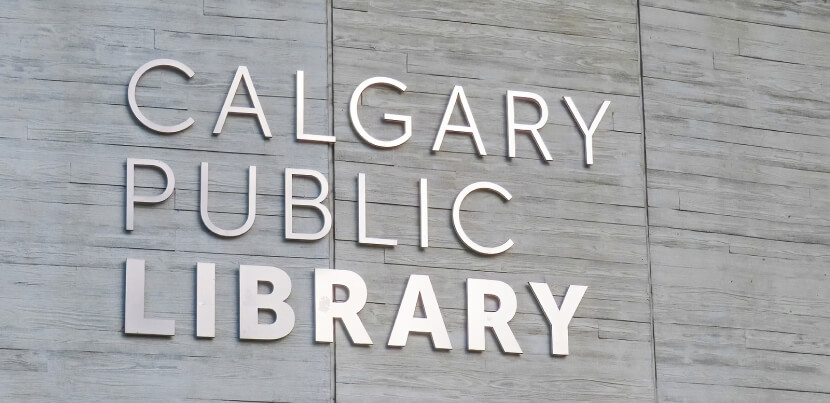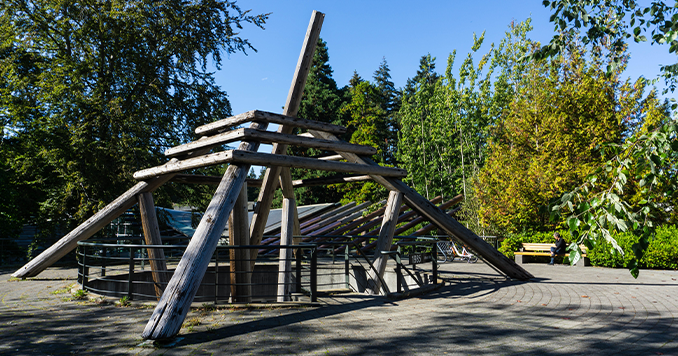Here's an alarming statistic: a 2021 study by researchers at Australian National University warned that, of the approximately 7,000 that are currently spoken around the world, some 1,500 of the world's languages are in danger of no longer being spoken by the end of this century.
The study, titled "Global predictors of language endangerment and the future of linguistic diversity", was published in the journal Nature Ecology & Evolution.
In a press release, one of the study's authors, Professor Lindell Bromham, noted that the researchers' findings were a reminder that more action was urgently needed to preserve at-risk languages — particularly the languages of Indigenous peoples, which are especially at risk:
When a language is lost, or is "sleeping" as we say for languages that are no longer spoken, we lose so much of our human cultural diversity. Every language is brilliant in its own way. Many of the languages predicted to be lost this century still have fluent speakers, so there is still the chance to invest in supporting communities to revitalize Indigenous languages and keep them strong for future generations.
See also:
-
Fostering diversity: public libraries as inclusive spaces for community celebration
-
Library outreach: teaching media literacy to underserved communities
Native tongues enable cultural expression

In 2019, the United Nations General Assembly proclaimed the period 2022–2032 as the International Decade of Indigenous Languages, "to draw attention to the critical loss of Indigenous languages and the urgent need to preserve, revitalize and promote Indigenous languages and to take urgent steps at the national and international levels".
The United Nations Educational, Scientific and Cultural Organization (UNESCO) serves as the lead agency for the International Decade. In its Global Action Plan, the organization noted that, for peoples around the world, the ability and freedom to use their chosen language is essential for a number of considerations, including human dignity, peaceful co-existence and sustainable development.
It also states:
Language, as a systematic form of communication which takes place in all human domains, facilitates people’s meaningful interactions with one another, enables cultural expressions in a variety of forms, as well as the transmission of centuries-long knowledge, history, world views, beliefs, and traditions, bequeathed from generation to generation, and contributes to the creation of economic value and benefits which lead to new employment opportunities, research and development, technology transfer and innovation.
The right of free unimpeded choice of language use, expression, and opinion as well as self-determination and active engagement in public life without fear of discrimination is a prerequisite for inclusiveness and equality as key conditions for the creation of open and participatory societies.
The role of libraries in Indigenous language revitalization
UNESCO's Global Action Plan calls for all stakeholders to work towards ensuring greater awareness of the importance of linguistic diversity and multilingualism, as well as legal recognition of the languages of Indigenous peoples at all levels.
Libraries of all kinds, including public, academic and research libraries and government libraries, have a role to play in not just preserving specific languages, but also in helping to mainstream them by being a part of, as UNESCO puts it, "widening the functional scope of Indigenous languages in all socio-cultural, economic, environmental, [and] public domains".
An article in the journal College & Research Libraries highlights the role that academic libraries in particular can play:
University libraries are in a distinct position to promote diversity and inclusion by collaborating with departments that might initiate programs, by fostering the creation of Indigenous collections, and by promoting these collections both in class and on campus to secure impact and make sure students know about these materials.
For libraries of all kinds, a commitment to Indigenous language is part of an overall mission to reflect and represent the diverse nature of the communities they serve. Libraries that offer PressReader, for example, give their patrons access to thousands of publications from all over the world in 64 languages, ranging from English and French to Kven, Northern Sami and Xhosa.
With that in mind, here's what some libraries and related organizations around the world are doing to preserve and promote these potentially endangered languages.
X̱wi7x̱wa Library (Canada)
Located at the University of British Columbia, X̱wi7x̱wa Library describes itself as "a centre for academic and community Indigenous scholarship". Its collections and services reflect Indigenous approaches to teaching, learning and research.
As part of the research for our 2022 Future of Libraries Report, PressReader interviewed Kayla Lar-Son, who was then the Indigenous Programs and Services Librarian (her current title is Interim Head Librarian). In addition to creating and providing access to a digital language archive, Lar-Son highlighted another important consideration: that libraries need to prioritize Indigenous data sovereignty. In other words, giving Indigenous communities the right to regulate and control the data that is recorded and collected about their communities, histories, culture and lands.
“Indigenous data sovereignty is not necessarily new to Indigenous communities, but it's fairly new within libraries,” Lar-Son told us. “So many Indigenous communities have very specific protocols for how to access and share information about them, and often this is informed by their own worldviews and understandings. When it comes to us as libraries, we need to be aware of how to facilitate conversations with communities, especially when we're acting as stewards of sensitive information or stewards of materials that we have gained in our collections over time, without the permission of the specific communities that we work with.”
Archive of the Indigenous Languages of Latin America (United States)
A joint project of several university departments, including the Department of Linguistics and the Digital Library Services Division of the University Libraries at the University of Texas at Austin, the AILLA's mission is "to preserve recordings made in the Indigenous languages of Latin America safely and permanently":
There are hundreds of native languages still spoken in Latin America, but they are all endangered, and so it is vital to collect and preserve recordings of native speakers performing oral works that are important to their cultures, as well as simple everyday speech.
The AILLA's collection includes digitized resources on an impressive array of language families, from Achi to Zuni.
National Library of Nigeria
Owing to Nigeria's colonial past, English is the country's official language and is the major language of communication in government, media, business and education. Nigeria's national anthem, for example, was written in English, as were its constitution and pledge.
However, Nigeria has an incredible degree of linguistic diversity, with more than 600 Indigenous languages spoken in various parts of the country. Professor Chinwe Anunobi, the National Librarian and Chief Executive Officer of the National Library of Nigeria, has asked stakeholders to ensure that these native tongues do not go extinct.
“Hence we have engaged communities in all the states of the Federation to collate and create what we refer to as the Nigerian Language Map," Anunobi said. "This is not just the map of Nigeria, but much more as it contains the languages spoken in each state. This Map will be printed and placed in our reading halls, as a reference material in all our state branches.
“In addition to that, we are working as we speak, on a compendium of the alphabets and numerals of our Indigenous languages. We consider this as the very first and critical step towards the preservation of our languages,” she said.
State Library of New South Wales (Australia)
According to the official website of the State Library of New South Wales's Rediscover Indigenous Languages project, at the time of Australian settlement in 1788, there were some 250 known languages spoken by Indigenous peoples across the country. Now, however, only about 20 are spoken comprehensively. Some items in the Library’s collections are in fact the only known surviving records of these particular languages.
Rediscovering Indigenous Languages — which is no longer an active project but remains online as a resource — made these items available digitally, "enabling widespread access to highly significant parts of Australia’s cultural heritage and providing the opportunity for all Australians, both Indigenous and non-Indigenous, to gain a better understanding of our nation's rich cultural landscape".
Calgary Public Library (Canada)

The Indigenous Languages Resource Centre at CPL's Central Library offers patrons the opportunity to meet with elders, share stories under a night-sky installation, view traditional items and get Indigenous-language lessons.
On the library's website, users can download language-teaching mobile apps that will enable them to learn the Blackfoot Language of the Piikani Nation, the Michif Language of the Métis People and the Stoney Nakoda Language, among others.
Smithsonian Institution (United States)
The Smithsonian Libraries has one of the premier Native American language and linguistics collections in the world, resulting from the exceptional work of the Smithsonian Institution since its founding.
As the Early Publications in American Indian Languages web portal explains, "Many of the early printed texts are the works of missionaries in their endeavor to convert the Indigenous people of North America to Christianity. They are among the earliest books produced in New World languages north of Mexico."
Trøndelag County Library (Norway)
For the past decade, Trøndelag county library in Norway has worked with international publishers and the local Indigenous Sámi community to produce editions of children's books and audiobooks translated into the Southern Sámi language.
Of the eight different Sámi languages, three are used in schools and by the government in Norway and Sweden, and Southern Sámi is the smallest of the three, with the number of native speakers estimated at between 600 and 2,500.
As Trøndelag librarian Morten Olsen Haugen wrote for the International Federation of Library Associations and Institutions website in 2019, "We want to bring the Sámi language outside the traditional areas of their users’ culture. Sámi children should be able to use their heart language even when they read — and talk — about pets, football, pirates, princesses, ghosts and monsters."










